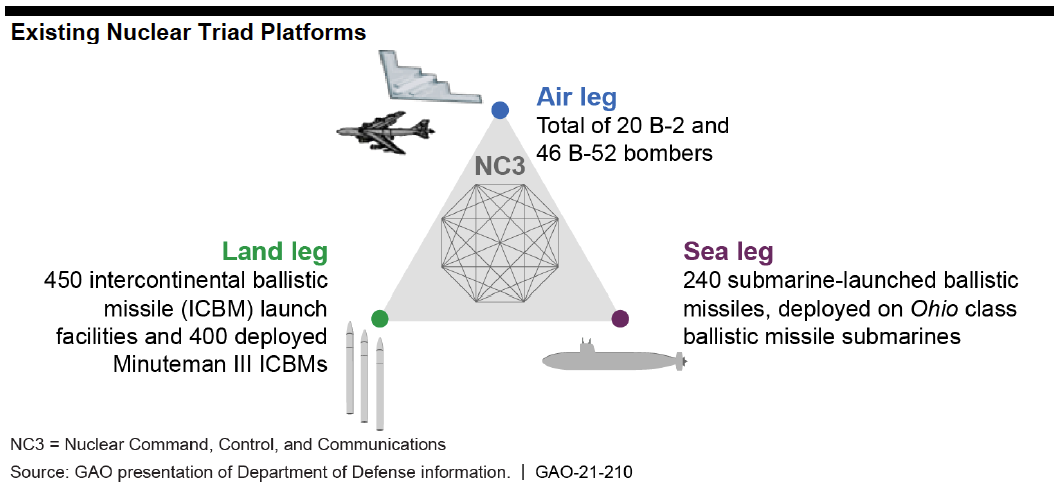The following is the May 6, 2021 Government Accountability Office report, Nuclear Triad: DoD and DoE Face Challenges Mitigating Risks to U.S. Deterrence Efforts.
From the report
What GAO Found
The Department of Defense (DOD) plans to replace or modernize existing triad platforms including submarines, intercontinental ballistic missiles, and bomber aircraft, as well as many of the nuclear command, control, and communication systems that facilitate control of them (see below). The Department of Energy (DOE) plans to modernize its nuclear infrastructure to life extend and produce warheads and bombs. DOD will be challenged to meet some U.S. Strategic Command (USSTRATCOM) operational needs with existing triad systems, shown below, through the end of their service lives. DOD must manage shortfalls in quantities of systems that it can field and capability limitations that reduce effectiveness of these systems. For example, the Navy will have to carefully manage resources to meet USSTRATCOM’s operational requirements for the Ohio class submarine. Further, DOE faces a long-term sustainment challenge with one of its bombs, the B83-1.
DOD and DOE are working to replace triad systems nearing retirement, but these replacement programs face schedule risks that could exacerbate challenges with existing triad systems. Replacement programs have risk factors that include concurrency between phases of acquisition programs from development through production, immature technologies, and limited schedule margin. For example,
- The Ground-Based Strategic Deterrent program includes limited schedule margin for testing, and if it fails a major test event it would likely delay initial fielding.
- The schedules for DOE’s life extension programs are highly dependent on the availability of suitable facilities to manufacture, assemble, and assess bomb and warhead components. However, many DOE facilities needed for these efforts are outdated or obsolete, as more than half of DOE’s facilities are over 40 years old.
DOD and DOE have limited ability to mitigate risks to the efficacy of the nuclear deterrent with their current strategy, and are beginning to consider alternatives.
Download the document here.






